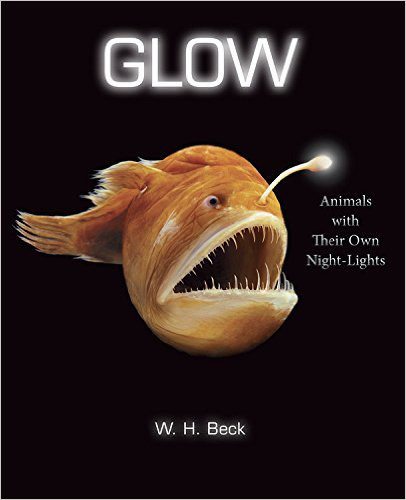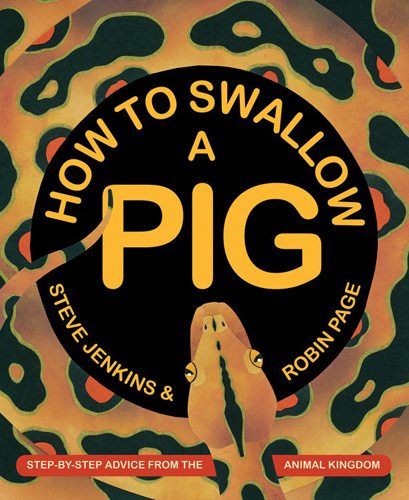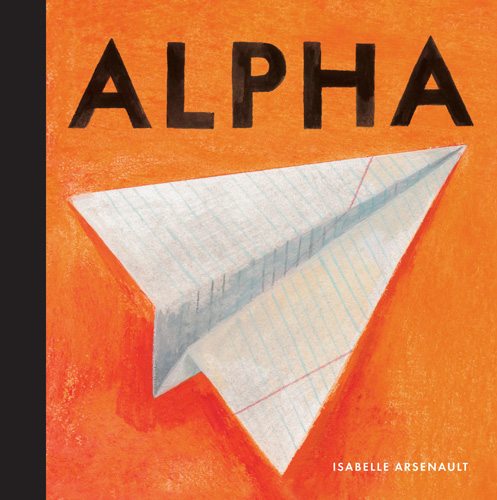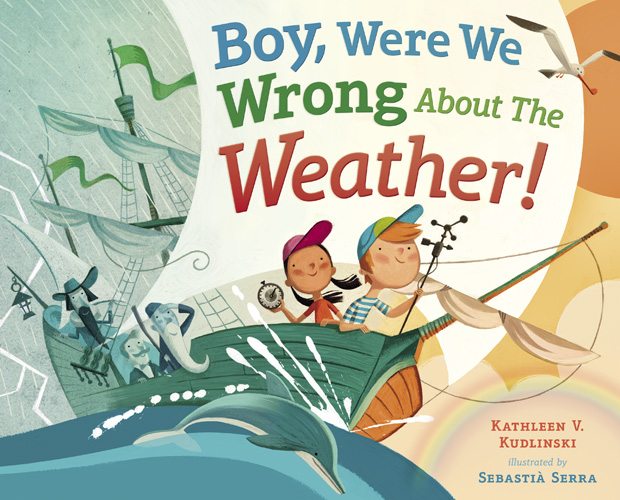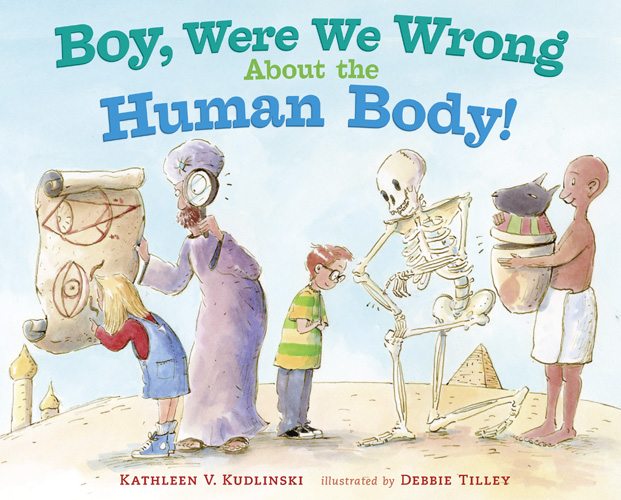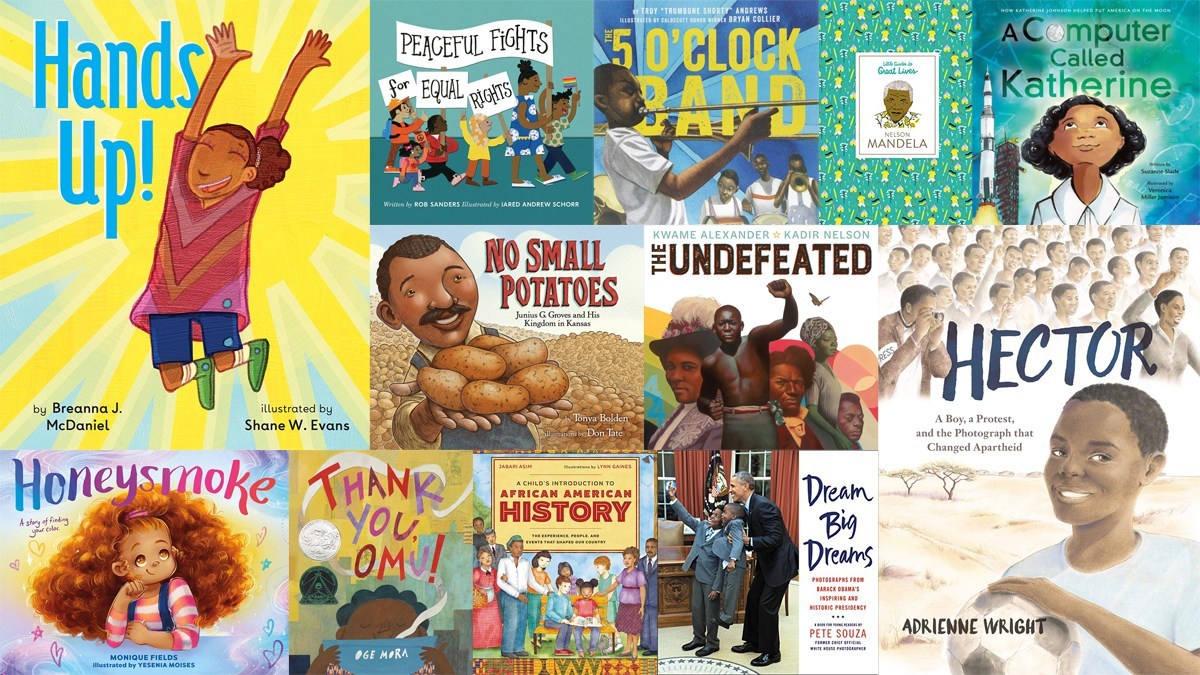Today’s Stack Overflow is chock-full of facts: mostly in the form of non-fiction, but with a couple of fact-filled fiction stories, too. Sit back, enjoy the pictures, and learn something new!
Glow: Animals with Their Own Night-Lights by W. H. Beck
Bioluminescent creatures are fascinating, and perhaps none more so than those that live deep, deep under the sea. This book features page after page of glowing creatures, mostly undersea, with beautiful close-up photographs that really let them shine. Each page has larger, simple text (“They glow to hide.”) along with smaller text providing some details about the particular creature on that page. At the back there’s a visual index of all the creatures in the book, showing common name, Latin name, size, and location. Eerie and beautiful.
Down, Down, Down by Steve Jenkins
While we’re on the subject of aquatic creatures, let’s go Down, Down, Down with Steve Jenkins. He starts above the surface of the ocean, and goes all the way down into the Marianas Trench, showing examples of the things that live in each zone as it gets darker and darker. Jenkins is well-known for his realistic papercraft illustrations, and I always love seeing his depictions of the natural world.
Each page has a depth chart and a paragraph describing the zone; at the back of the book are thumbnails with captions going into even more detail about each of the creatures shown on the page, along with a diagram showing the size of things relative to humans.
How to Swallow a Pig by Steve Jenkins & Robin Page
If that wasn’t quite enough Steve Jenkins for you, here’s another. This book provides step-by-step advice from the animal kingdom on everything from cracking a nut like a crow to repelling insects like a Capuchin monkey (hint: it involves putting a millipede in your mouth). Written like a how-to book that you’d never actually follow, it’s a funny but accurately detailed explanation of how certain animals do the things they do, accompanied by Jenkins’s paper illustrations. My toddler loves flipping through this just for the pictures even when I’m not reading it to her, and I love it for the vivid descriptions.
How to Read a Story by Kate Messner, illustrated by Mark Siegel
You may think it’s simple to read a story, but some folks need a little push in the right direction. This book is a step-by-step introduction to reading a story–find a book, a buddy, and a cozy reading spot, and be sure to do voices for all the characters! I like the hints of the story-within-a-story that the little kid is reading, but mostly I love reading aloud and encouraging others to do the same. I’ve been volunteering lately at my daughter’s middle school for Lit Circles, and I’ve discovered that a lot of kids there simply aren’t comfortable reading a story out loud. Here’s to the next generation of readers: may they love reading to each other, with exciting and confident voices!
The NATO phonetic alphabet is the one you’ll hear used by the military or emergency services to communicate letters precisely–everyone who has learned this list can immediately reference what letter the speaker means, and it’s an internationally recognized code. (As opposed to this Phonetic Table for Trolls, designed to obfuscate and irritate.) Alpha just displays a word and an image on each spread, like a bowler hat for Charlie (Chaplin), or a familiar red plastic board game piece for Hotel. The explanation of the NATO phonetic alphabet comes at the back of the book, but you and your kids will have fun exploring the images and discovering why there are boxing gloves for Mike or a phonograph for Victor. November Echo Alpha Tango!
Jackrabbit McCabe & the Electric Telegraph by Lucy Margaret Rozier and Leo Espinosa
Jackrabbit McCabe is the fastest thing in the Great Plains, and everyone in Windy Flats relies on him whenever a message needs to get sent somewhere fast. But then along comes this newfangled telegraph device. Can Jackrabbit outrun it? Okay, spoiler alert: no. Although the story is set up as a tall tale with a “John Henry vs. the Steam Engine” sort of build-up, the depiction of the telegraph itself is actually realistic–messages travel fast, and even Jackrabbit is no match for a signal that arrives seemingly instantaneously. Fortunately, there’s still a happy ending–not to mention an Author’s Note about the telegraph, and a chart so you can learn Morse Code yourself!
–. .-. . .- – .–. .. -.-. – ..- .-. . … – — — .-.-.-
Boy, Were We Wrong About the Weather! by Kathleen V. Kudlinski, illustrated by Sebastià Serra
Kathleen Kudlinski has a whole series of books about misconceptions, things that people used to believe about all sorts of things. The fun trivia (Spanish explorers tried to tell people about the hurricanes they encountered while crossing the Atlantic, but people thought they were just making things up!) is contrasted with our current understanding of things (hurricanes are real, and we know what causes them).
Boy, Were We Wrong About the Human Body! by Kathleen V. Kudlinski, illustrated by Debbie Tilley
And this volume is all about the human body, with topics like blood-letting, how vision works, and the four humours. Each volume ends with the acknowledgement that even now, we don’t know everything, and that scientists are still learning more all the time. Kudlinski encourages kids to learn more, because maybe they’ll be the next ones to make us say, “Boy, were we wrong!”
Disclosure: I received review copies of these books.

